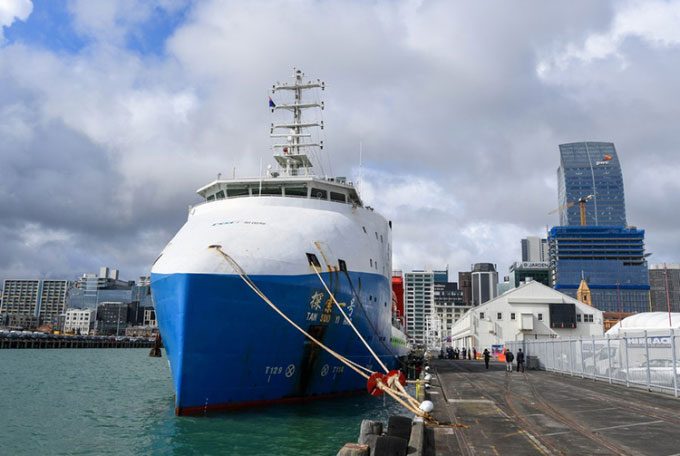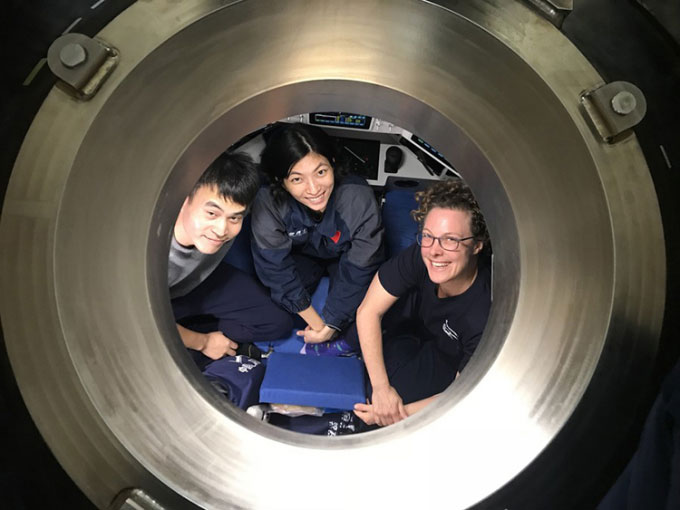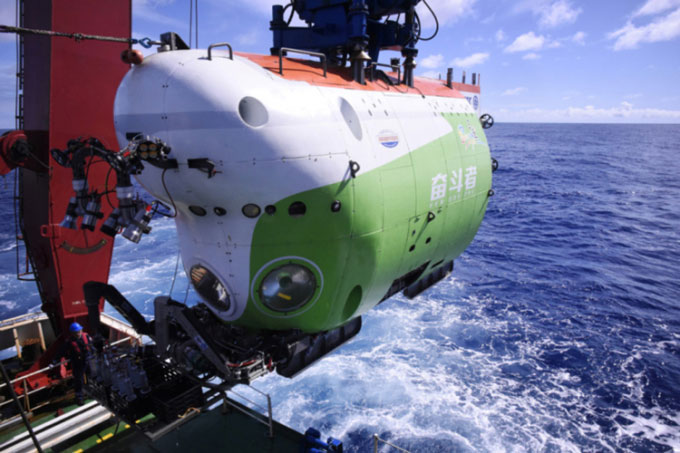Chinese and New Zealand scientists have completed an expedition to the Kermadec Trench, one of the deepest places in the Earth’s crust.

The Tan Suo Yi Hao vessel carrying the crew arrives at Queens Wharf in New Zealand on November 27. (Photo: Xinhua).
Dr. Kareen Schnabel, a marine biologist from New Zealand’s National Institute of Water and Atmospheric Research (NIWA), repeatedly used the phrase “unbelievable” to describe her unique experience with colleagues Deng Yuqing and Yuan Xin from the Institute of Deep Sea Science and Engineering (IDSSE) following the expedition to the Kermadec Trench, located over 1,000 km northeast of New Zealand.
This ocean trench stretches over 1,000 km, with its deepest point, Scholl Deep, lying 10,047 meters below sea level. In comparison, the highest mountain on Earth, Mount Everest, is only 8,848.86 meters tall.

Yuan Xin, Deng Yuqing, and Kareen Schnabel (left to right). (Photo: IDSSE)
During the two-month journey aboard the IDSSE research vessel “Tan Suo Yi Hao”, the trio of scientists utilized the deep-sea submersible HOV Fendouzhe to descend into Scholl Deep, making Schnabel and Deng the first women to achieve this feat. They spent six hours exploring Scholl Deep and the slopes of the Kermadec Trench, successfully collecting deep-sea water samples, sediments, rocks, biological samples, and environmental data.
“Textbooks and images cannot compare to the experience of seeing the light fade as you leave the ocean’s surface and witnessing the deep-sea floor with your own eyes,” Schnabel shared. “We saw many small creatures on the seabed and in the water. What is concerning is that there is still debris like buoys and fishing nets, even though we were over 10,000 meters below sea level.”

The deep-sea submersible HOV Fendouzhe. (Photo: IDSSE).
In addition to the operations of the HOV Fendouzhe, the crew also deployed other independent equipment such as landing crafts, water sampling devices, and gravity coring equipment.
“It is exciting for Chinese and New Zealand scientists to have the opportunity to conduct a comprehensive assessment of the complexity and diversity of the geography and ecosystems of the Kermadec Trench. Sampling provides us with a unique opportunity to understand the nature of subduction zones and the mechanisms that initiate subduction in the Kermadec Trench,” said Dr. Peng Xiaotong from IDSSE, the leader of this exploration project.
The Chinese Ambassador Wang Xiaolong emphasized that the expedition represents a journey of exploration and friendship, laying an important foundation for maritime cooperation between China and New Zealand.


















































